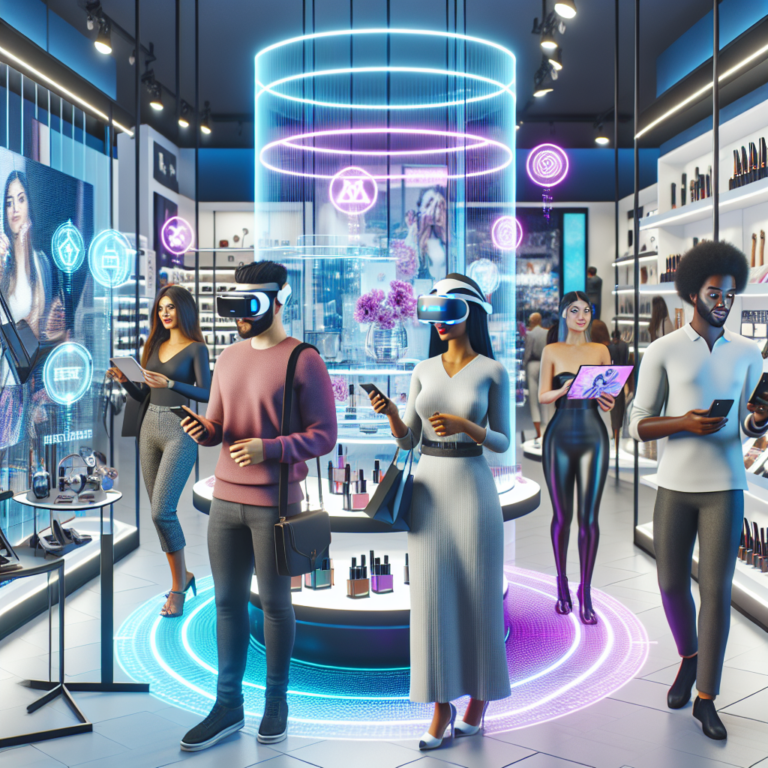Transforming the Shopping Landscape: The Impact of XR on Retail Experience
The Rise of Extended Reality in Retail
As technology continues to advance at breakneck speed, the retail sector is undergoing a significant transformation. One of the most exciting innovations is Extended Reality (XR), which encompasses Virtual Reality (VR), Augmented Reality (AR), and Mixed Reality (MR). These cutting-edge technologies are not just futuristic concepts; they are actively reshaping the shopping experience, both in-store and online. Let’s explore how XR is revolutionizing the way we shop. 🛍️
Enhancing the In-Store Experience with XR
While e-commerce has exploded in popularity, physical stores still play a vital role in many consumers’ shopping journeys. XR technologies enhance this experience in ways that were once unimaginable. Here are some key innovations:
- Immersive Product Displays: Imagine walking into a store where products leap off the shelves! XR allows retailers to create immersive displays that captivate customers and offer interactive product experiences. Shoppers can visualize how electronics fit into their homes or see how clothing might look on them without trying it on.
- Interactive Store Navigation: Finding items in a large store can be a challenge. With AR-powered maps on smartphones or store kiosks, customers can easily navigate to their desired products, enhancing the overall shopping journey.
- Personalized Shopping Experiences: By integrating XR with customer data, retailers can offer personalized experiences tailored to individual preferences. For instance, customers can receive tailored recommendations or discounts via AR displays based on their shopping habits.
- Try Before You Buy: XR technology enables customers to try out products virtually, whether it’s testing out makeup shades or fitting furniture in their homes. This capability leads to higher customer satisfaction and reduces return rates.
Revamping Online Shopping with XR
Online shopping has become the go-to choice for many consumers, but it still faces challenges such as a lack of physical interaction and the inability to see or try products beforehand. XR is bridging this gap:
- Virtual Showrooms: Companies can create immersive virtual showrooms where customers can browse products as if they were in a physical store. This enhances engagement and encourages shoppers to explore a wider range of products.
- Augmented Reality Product Visualization: AR apps allow customers to visualize how products will look in their homes before making a purchase. For example, furniture brands offer AR features that let consumers place virtual couches in their living rooms to check size and aesthetics.
- Social Shopping Experiences: XR creates a sense of community by enabling customers to shop together in virtual environments. This social aspect enhances consumer confidence and fosters a better buying experience through shared opinions.
- Engaging Product Demos: Through XR, brands can offer interactive and engaging product demos online. Customers can see how to use products effectively, which boosts their confidence in making a purchase.
Benefits of XR in Retail
The integration of XR in retail presents a multitude of advantages for both retailers and consumers:
- Increased Customer Engagement: Interactive experiences capture attention and create memorable shopping moments, leading to more engaged consumers.
- Higher Conversion Rates: By offering immersive experiences and personalized services, retailers can see significant boosts in conversion rates and sales.
- Enhanced Brand Loyalty: By providing unique experiences, brands can foster loyalty among customers, encouraging repeat purchases and positive word-of-mouth.
- Data-Driven Insights: XR technologies collect valuable data on consumer interactions, helping retailers understand preferences and improve marketing strategies.
Challenges to Overcome
While the benefits of XR in retail are compelling, challenges exist that retailers must navigate:
- High Initial Investment: Implementing XR technology often requires significant financial investment, which may deter smaller retailers.
- Technology Adoption Barriers: Some consumers might be hesitant to engage with new technologies. Educating and persuading customers to use XR features is crucial.
- Keeping Experience Up-to-Date: As consumer preferences evolve, retailers must continuously update their XR offerings to remain relevant and engaging.
Case Studies in XR Retail Innovation
Various brands have pioneered the use of XR in retail, showcasing its game-changing potential:
- IKEA: IKEA’s AR app allows customers to visualize how furniture will fit in their homes, making the shopping process more convenient and personalized.
- Sephora: The Sephora Virtual Artist app uses AR to let customers try on makeup virtually, increasing engagement and helping customers make informed choices.
- Nike: Nike’s use of VR in its flagship stores offers customers an immersive experience to learn about the brand’s history and try products in a unique setting.
The Future of Retail with XR
The retail landscape is rapidly evolving, with XR technologies leading the charge. As we look ahead, we can anticipate more seamless blends of online and in-store experiences, providing customers with unparalleled convenience and immersion. The potential of XR in retail is limitless, ensuring that shopping becomes a more enjoyable and engaging experience for everyone involved. 🚀




0 Comments